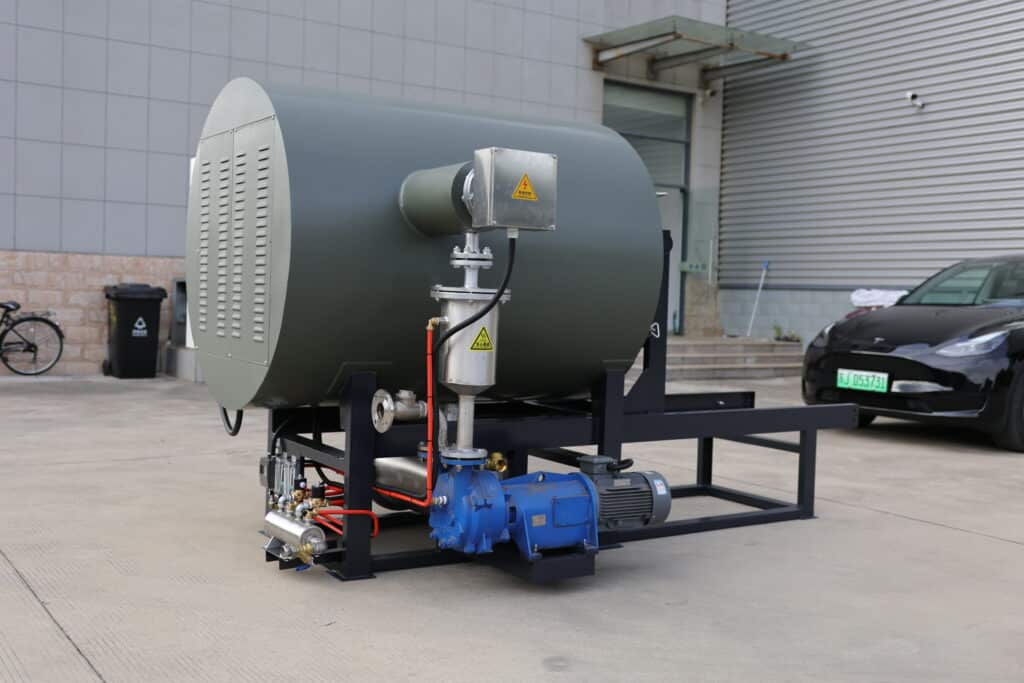Thermal oil boilers, or heat transfer oil boilers or systems, are efficient systems that transfer heat through thermal medium rather than water or steam. These boilers find extensive application in industries where uniform, high temperature heat is needed, like chemical production, food processing and manufacture of plastics.

Working Principle
A heat transfer oil boiler operates by circulating thermal oil in a closed-loop boiler system. Here is a brief overview of how that process works:
Step 1: Heating Element
This is the burner, which produces a flame and sets energy into the heat transfer oil.
Heat Transfer Fluid Recirculation
A pump circulates the hot oil through heat exchangers or other heat-using equipment.
Heat Transfer
The thermal oil transfers heat to the required processes while maintaining a constant temperature.
This thermal oil goes back to the boiler to be reheated in a closed cycle.
Thermal oil systems such as ThermaSol offer advantages over water/steam systems, as they can operate within the 300–400°C temperature range without being constrained by high pressure.
Ways to Improve the Efficiency
Optimize Combustion
- Clean Fuels in Combustion: Using clean fuels ensures more heat release and reduced pollution.
- Optimize Air-to-Fuel Ratio: Sophisticated controls can maintain the correct mix to avoid excess air, preventing dilution of combustion efficiency.
Thermal Insulation
- Cover boiler surfaces and piping with high-grade insulation materials to decrease heat losses, locking more energy into the system.
Heat Recovery Systems
- Economizers: Capture waste heat from flue gases to preheat the thermal oil or feedwater.
- Recuperators: Preheat fresh combustion air to enhance the fuel combustion rate.
Periodic Maintenance
- Inspections: Regularly inspect seals, packing, and surfaces for wear or soot/scale buildup.
- Check Components: Replace burned-out parts such as burners and pumps.
- Calibration: Ensure sensors and control systems are properly calibrated for accurate temperature and pressure regulation.
Advanced Controls
- Install real-time monitoring systems to measure temperature, flow rate, and fuel usage dynamically, optimizing operations.
Upgrade Components
- Upgrade to newer high-efficiency burners.
- Use thermal oils with higher conductivity for improved heat transfer rates.
Eliminate Heat Loss in Circulation
- Routinely inspect and repair pipeline insulation.
- Minimize dead-leg sections where thermal fluid stagnation can occur.
Plan Safety and Environmental Aspects
Enhancing safety improves operational efficiency. Key practices include:
- Adding pressure-relief valves and temperature cut-off controls to reduce system overload risks.
- Using low-NOx burners to meet environmental regulations.
Conclusion
Heat transfer oil boilers are vital for various industrial heating applications, providing consistent high-temperature energy. By employing techniques such as combustion optimization, insulation enhancement, and heat recovery, businesses can reduce costs while maintaining reliability. Routine maintenance and system upgrades further support a safe and eco-friendly heating system.
Reading:
